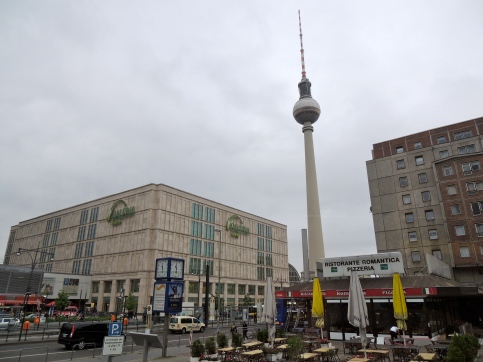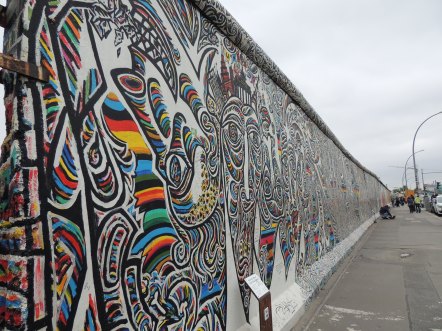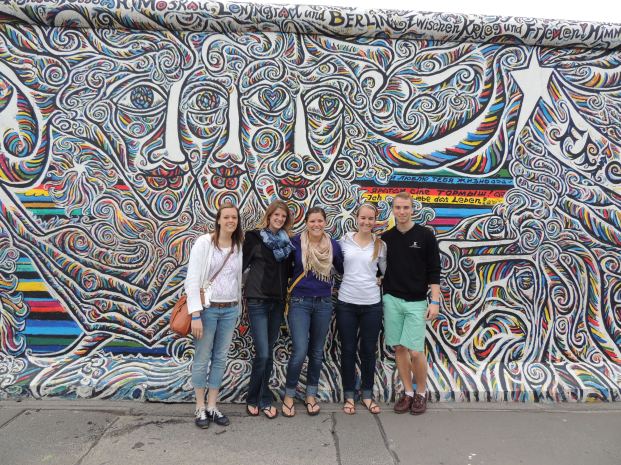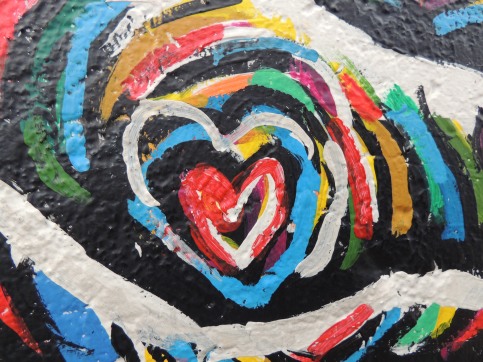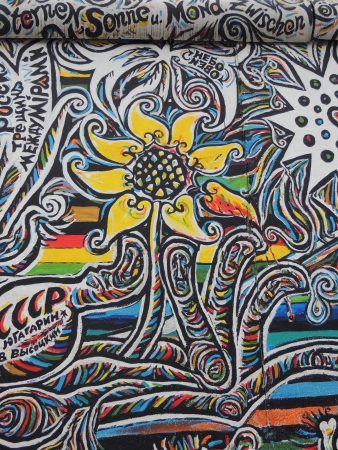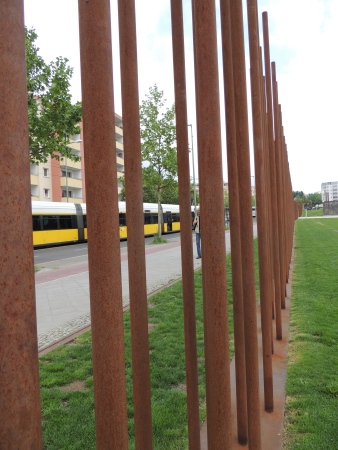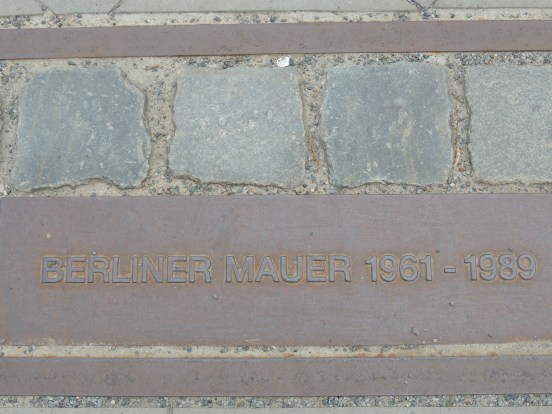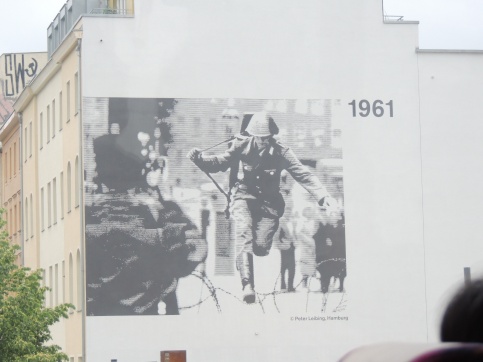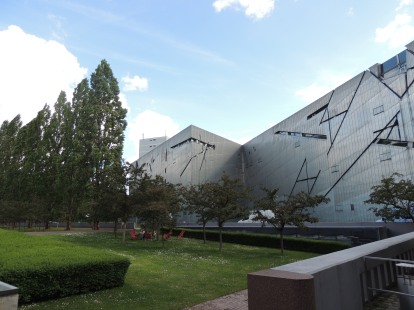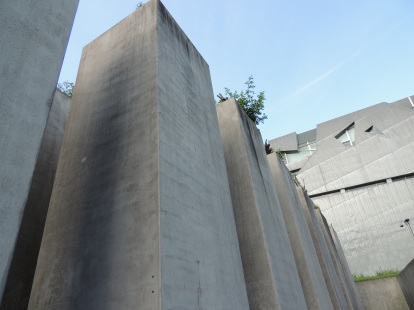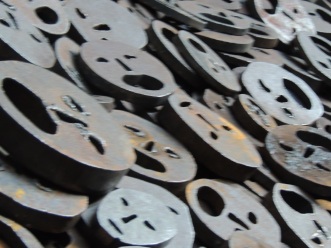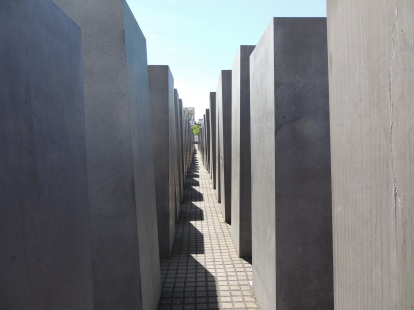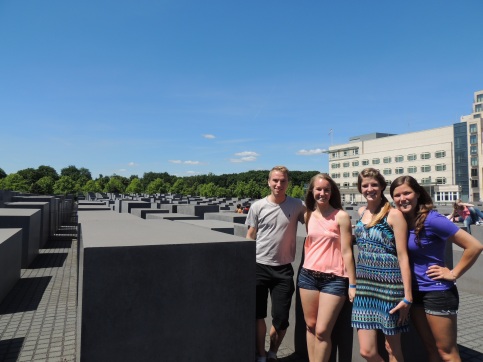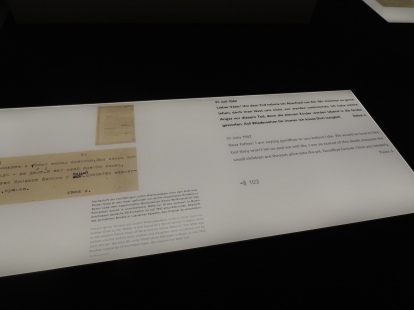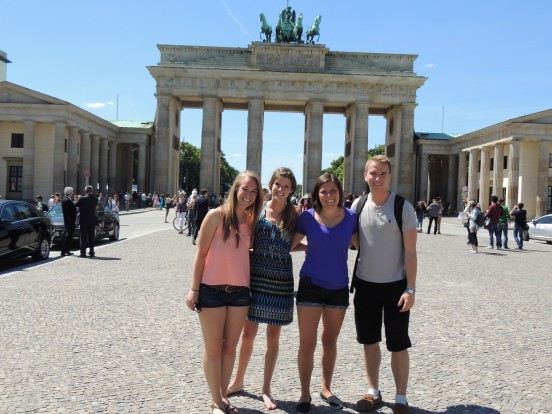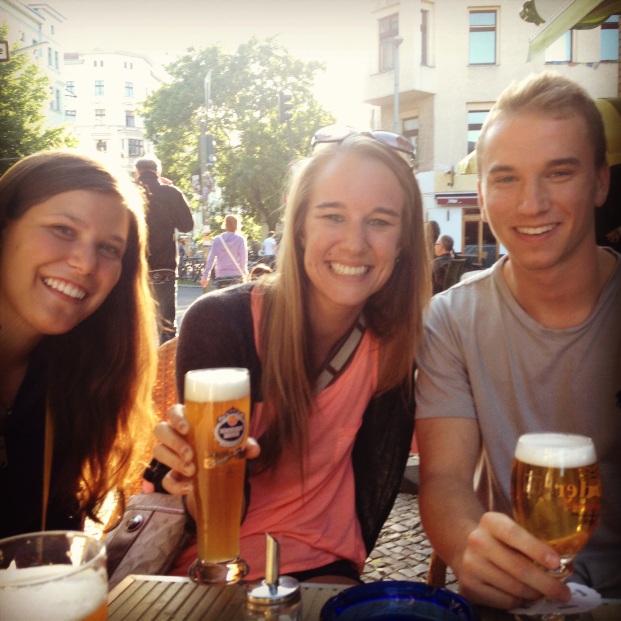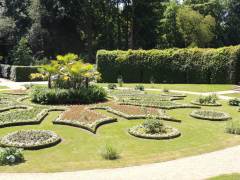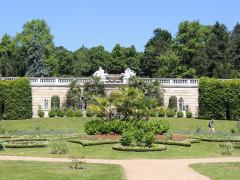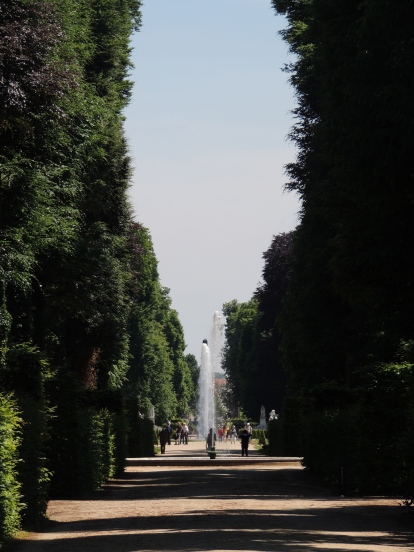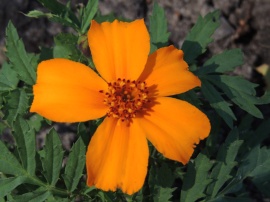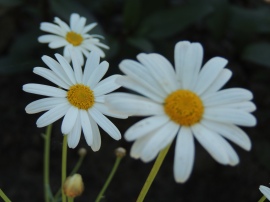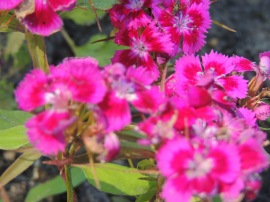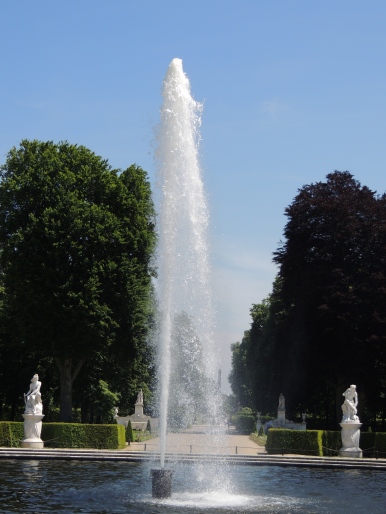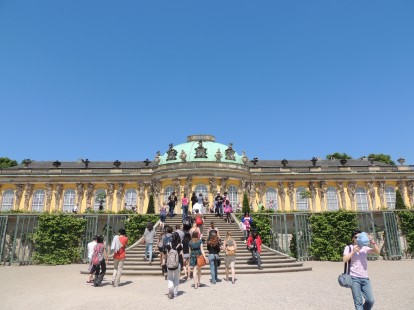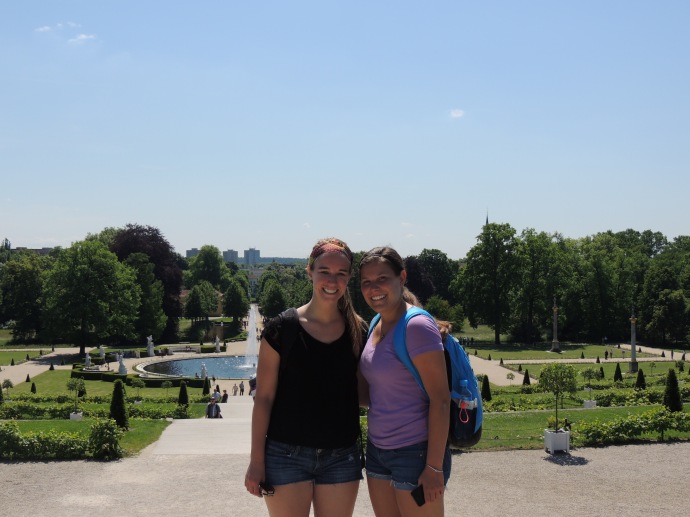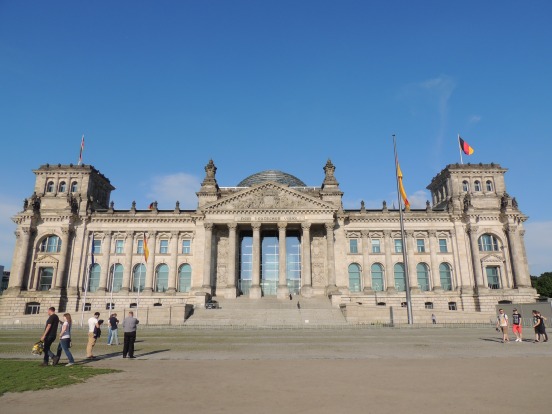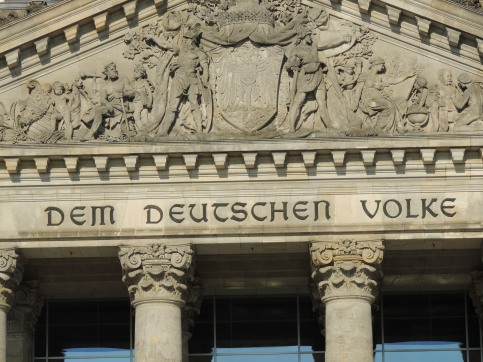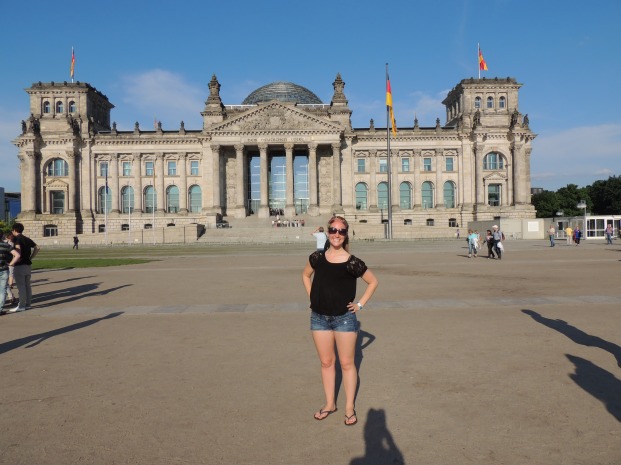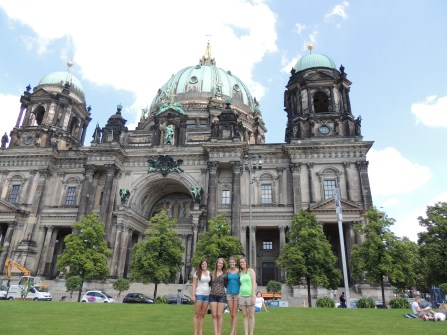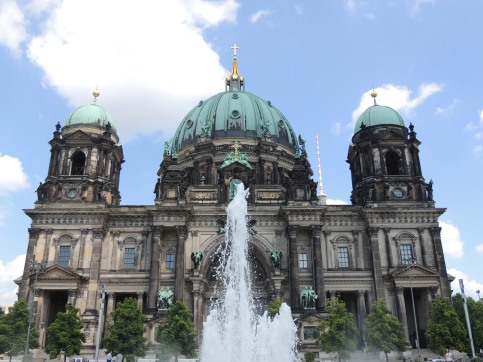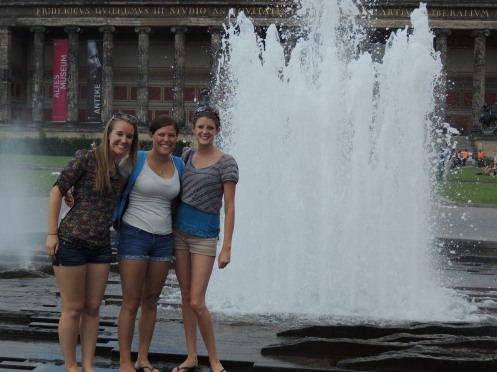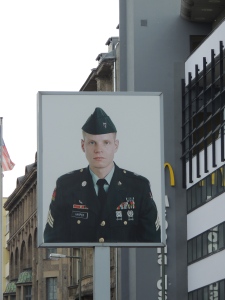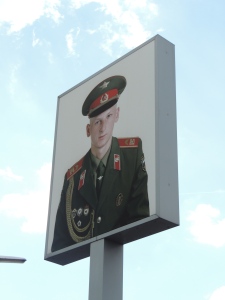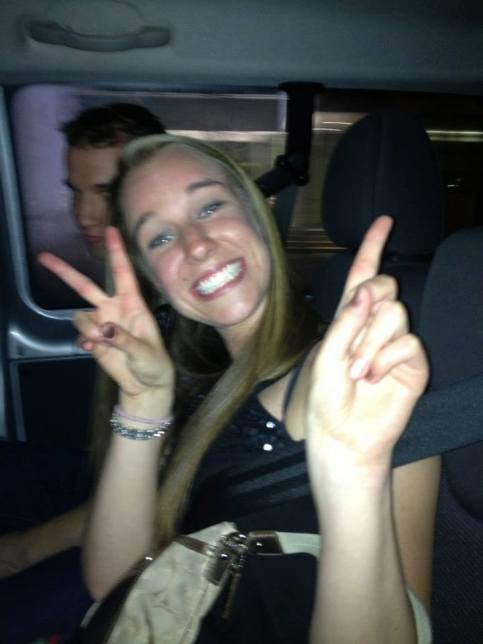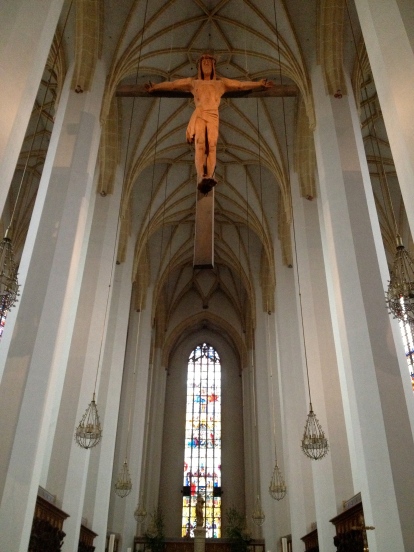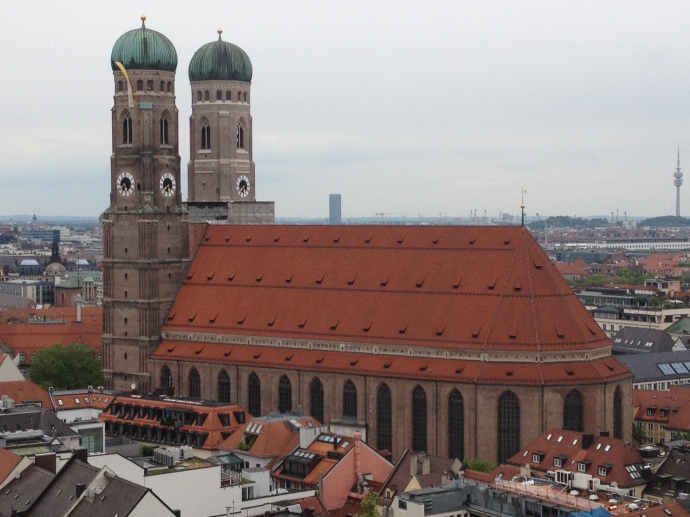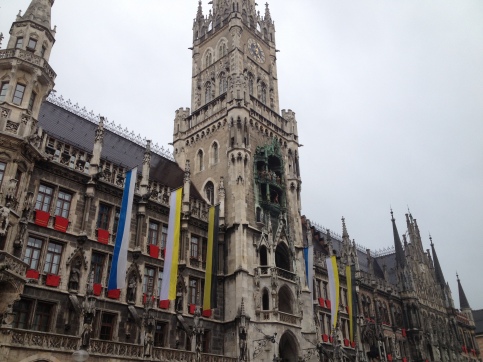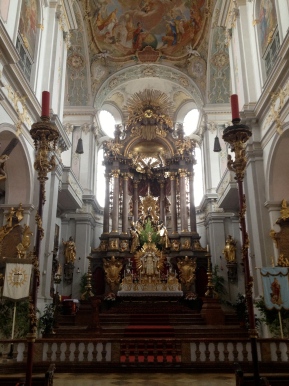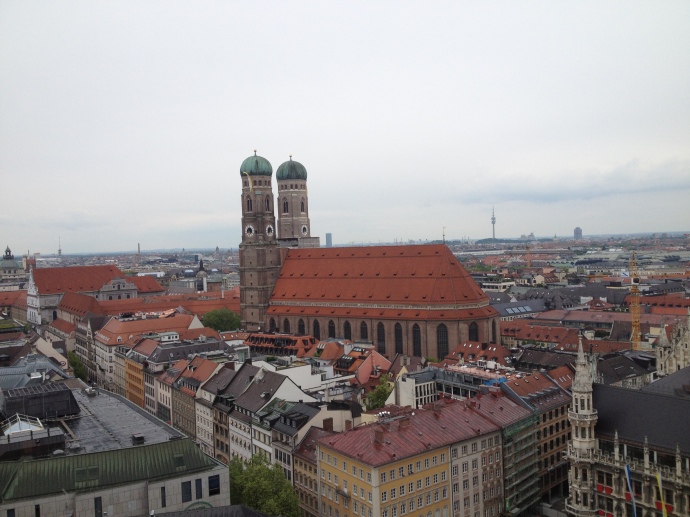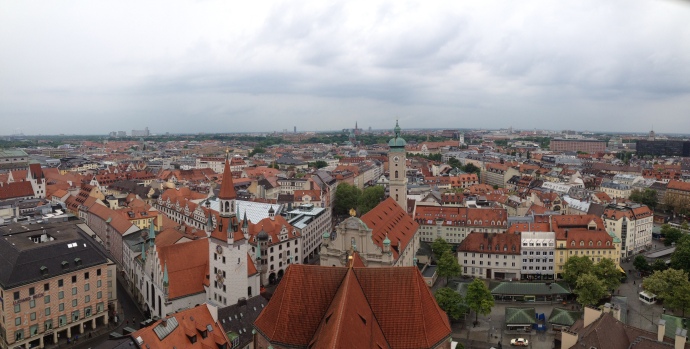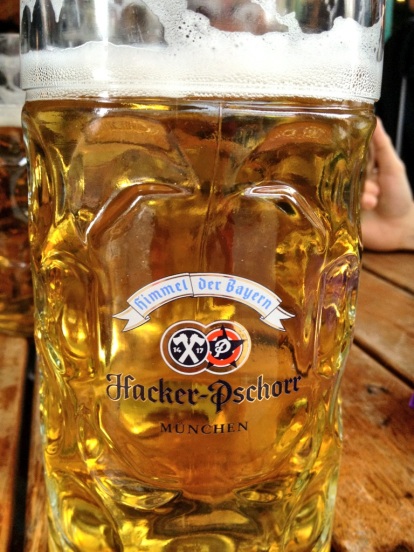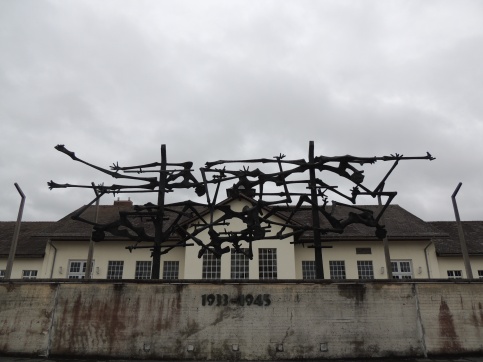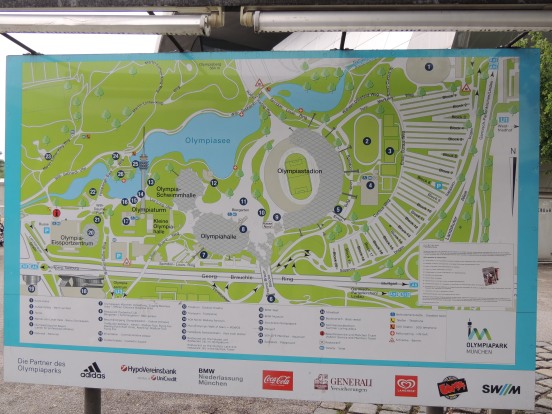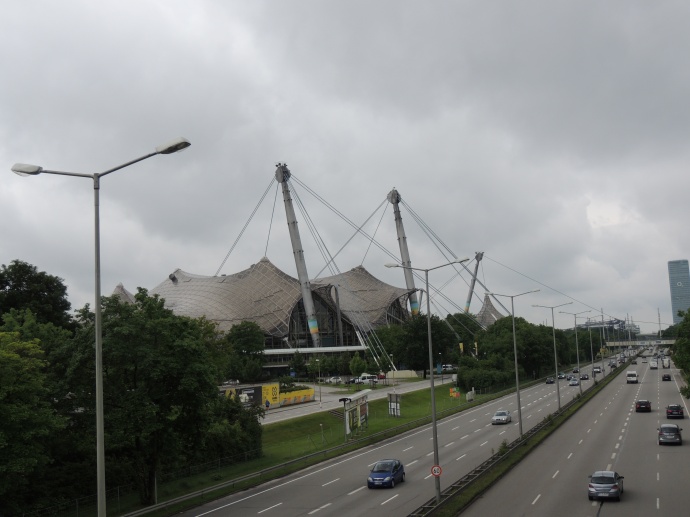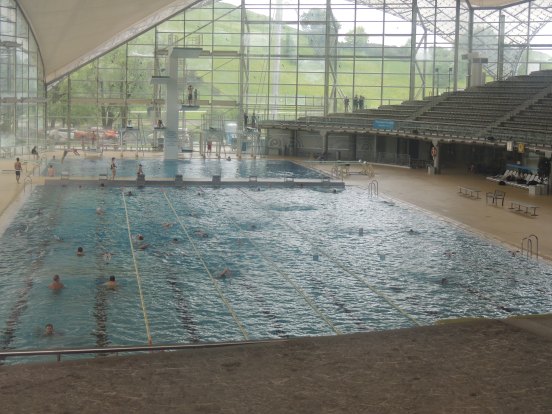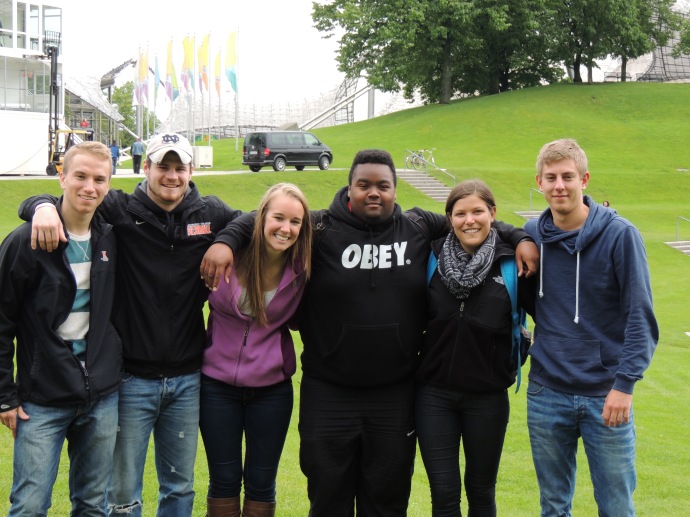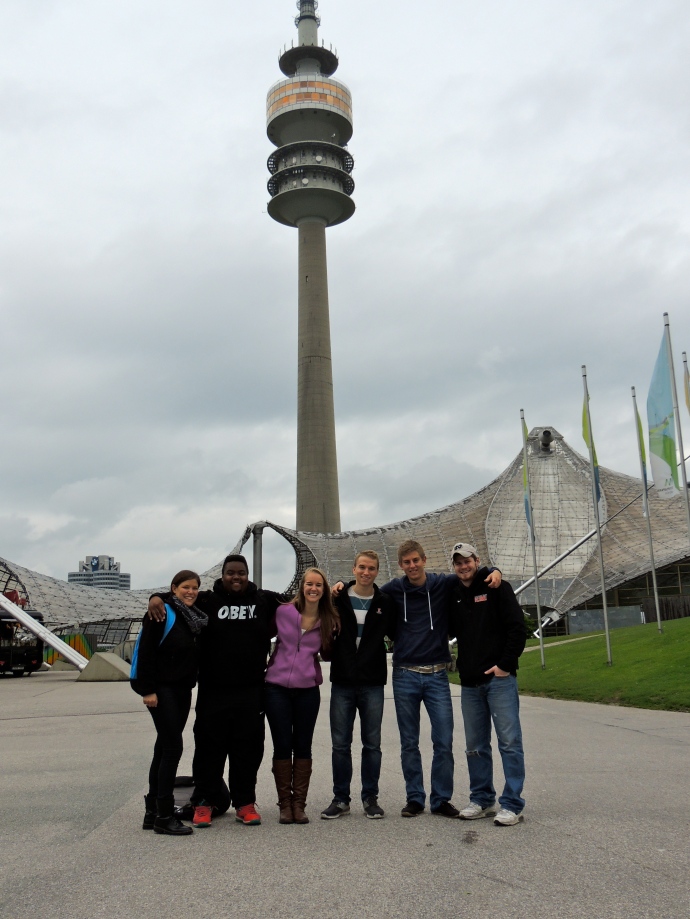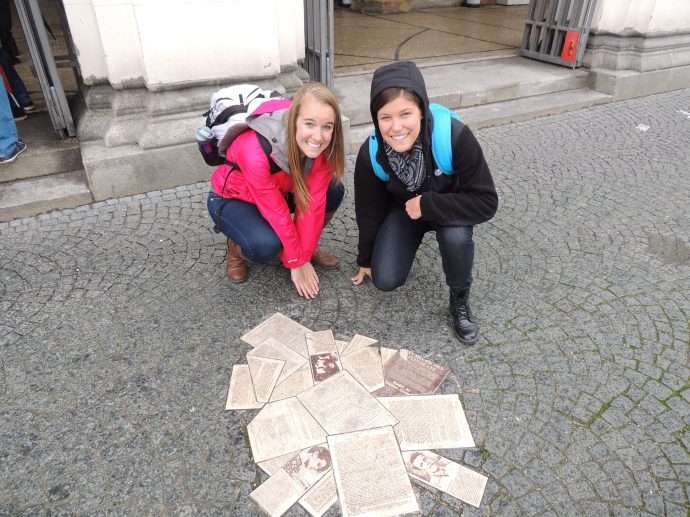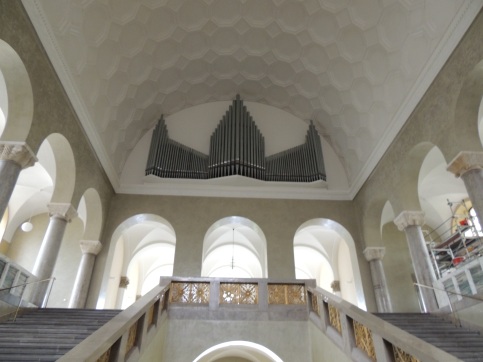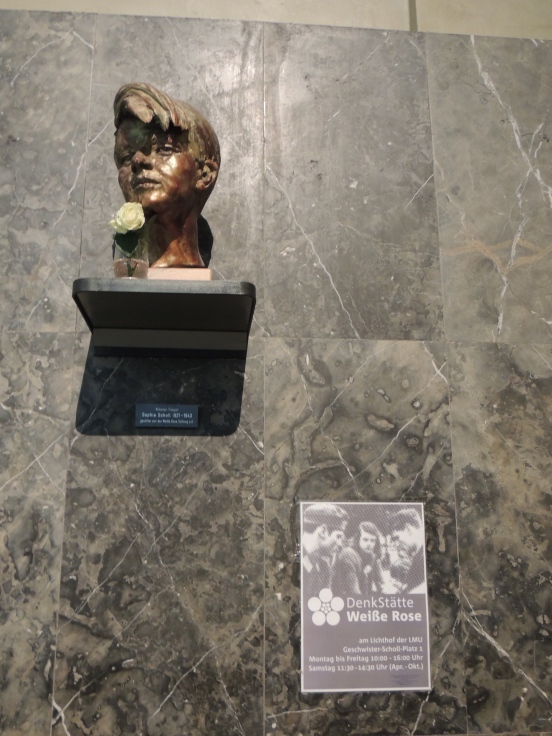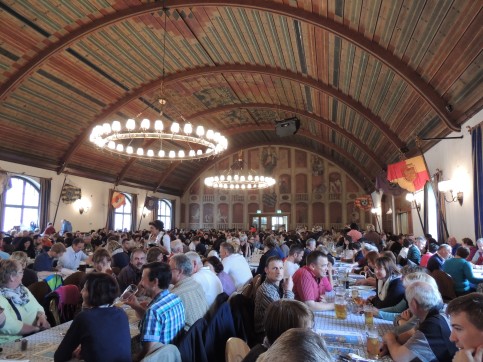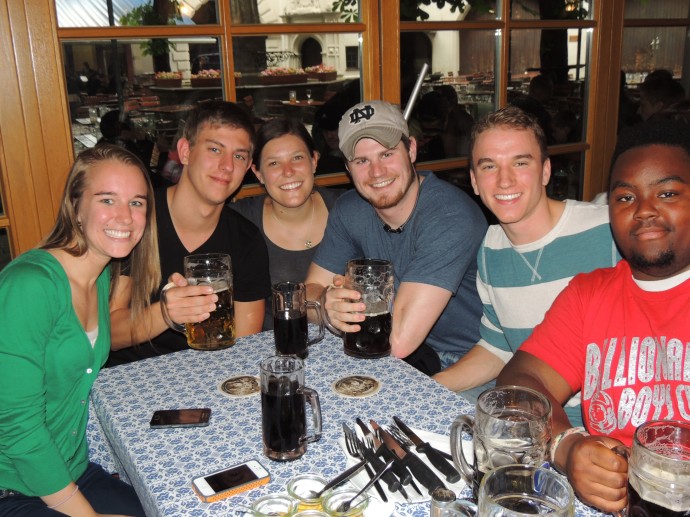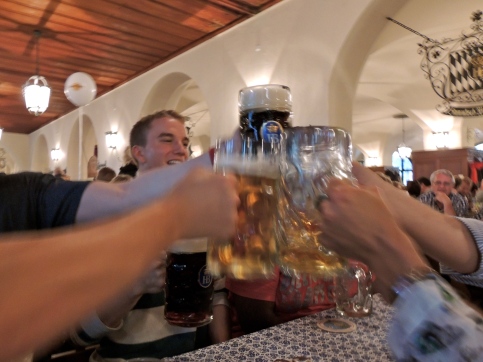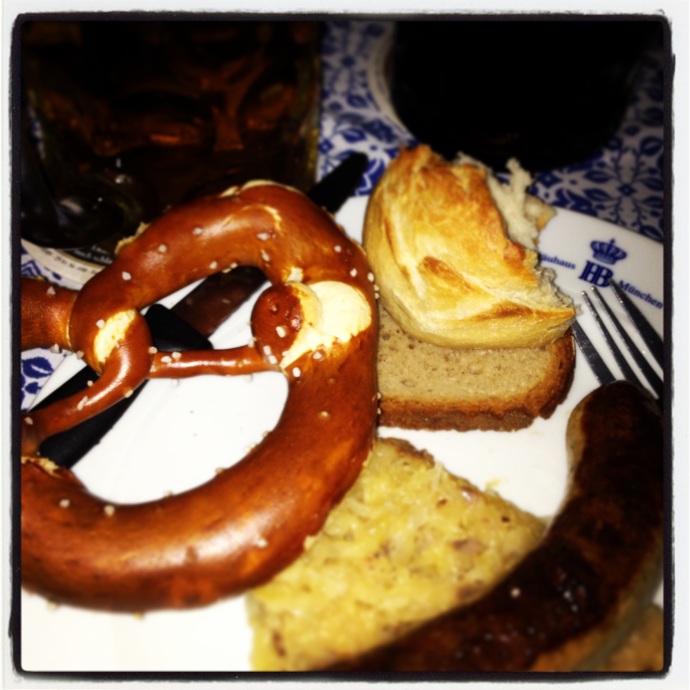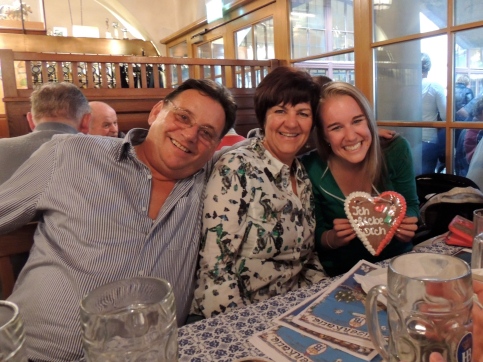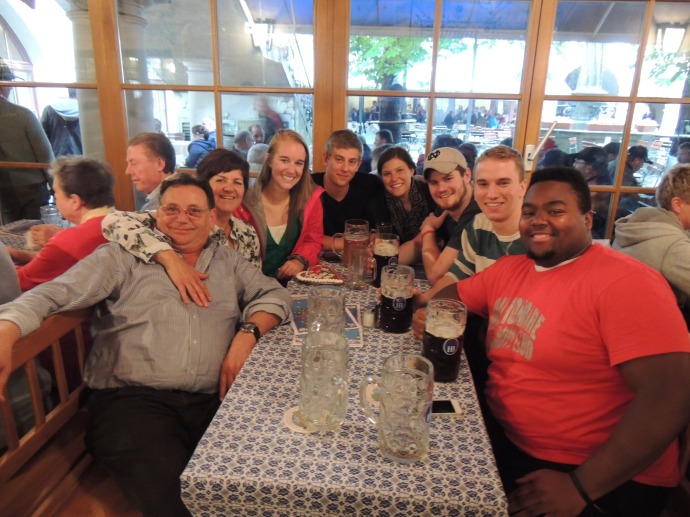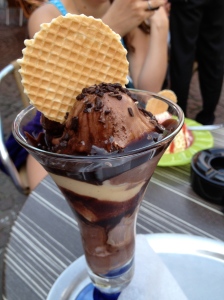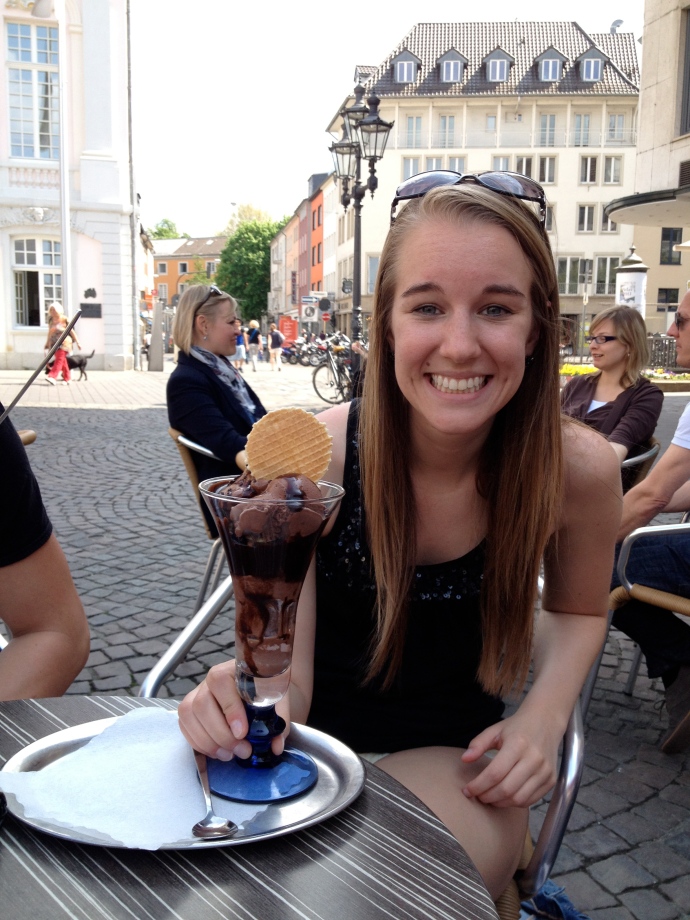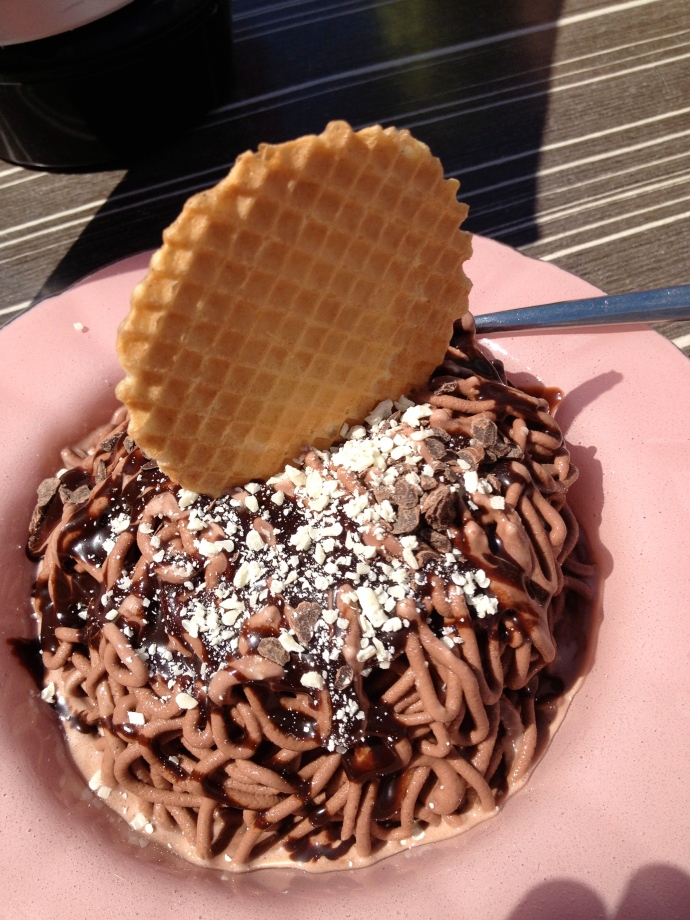During our city tour of Berlin, the tour guide told us all about the enormous city we were in. He explained that the city was a wide array of culture and expression and that all types of people could be found in Berlin. At one point he told us, “There’s a saying we Germans used to have about Berlin, ‘Good girls go to heaven, bad girls go to Berlin'”. We thought that was pretty great and continued to use the saying during our entire week in the city.
As part of our “Junior Year Program” at the Uni Bonn, our group leaders organize a week-long trip to Germany’s capital city, Berlin. It just so happened that our trip to Berlin started the day after our trip to Munich ended, making for a very exhausting couple of weeks. Our program has more than 60 people in it, but all did not attend the Berlin excursion, although the trip cost was included in our program fee. We filled a double-decker coach bus and endured the 7 hour bus ride to Berlin, which was especially painful on the day after the 9 hour bus ride home from Munich.
Day 1
We left Bonn at 7:00am on Monday, June 3rd. Many people, myself included, slept most of the trip away. Along the way stopped for a lunch break and tour at an old East German checkpoint in Marienborn. The Marienborn border crossing checkpoint serves as a memorial to those who suffered, both internally and externally, under the pressures and control of the former DDR (Deutsche Demokratische Republik). Our tour was short but we heard all about the timely process of the passport check stations and even had the chance to climb up into the command tower. We learned all about the secret tricks the East German police officers used to find refugees trying to leave the DDR and illegal goods trying to enter the Soviet-occupied country.
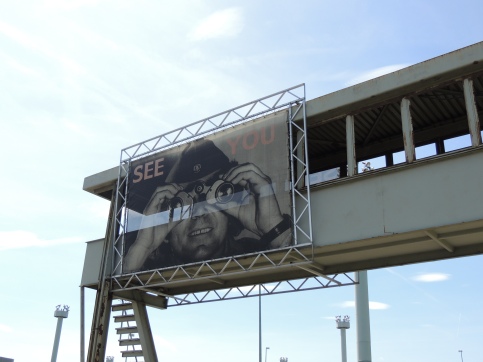
The original checkpoint overpass for aerial surveillance – they added the “See You” poster after Germany’s reunification but it is still a little daunting.
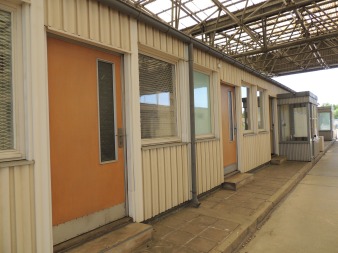
This was one of many buildings, which all looked exactly the same, in the passport check section of the border crossing. We learned all about the passport checking process, which could take up to eight or ten hours sometimes!
We finally arrived in Berlin and checked into our hostel, which is not an easy task with a large group. I was fortunate enough to snag a four-person room with Sarah, Danielle and Rachel. We made our way down to our hostel-provided dinner and enjoyed a lovely semi-home cooked meal. It was my first time eating mashed potatoes in 4.5 months – I was on cloud 9! After dinner, we decided to walk around after to explore the area near our hostel and seek out a grocery store for some snacks.

Our first glimpse of evening in Berlin was absolutely breathtaking. It is such a wonderful, beautiful city!
Day 2
We started our second day, which was really our fist full day in Berlin, with a city tour aboard our coach bus. We drove around the city of Berlin for a couple of hours, making various stops at the East Side Gallery and Ackerstraße, both significant portions and sites of the Berlin Wall.
The Soviet Union built the Berlin Wall, literally overnight, on August 13th, 1961. The Soviets, who occupied East Berlin and East Germany after the end of the second world war, wanted to close all exits to the western, capitalist-controlled areas of Europe and Germany. Residents of Berlin woke to a wall of barbed wire, guard dogs and concrete. Many people found themselves separated from their workplaces, friends, family and even spouses. After the historic day in August, there was no chance for them to get across – or so thought the East Berlin police forces. Many people devised creative escape plans and some were successful in leaving the terrors of communism, but many perished in escape attempts, as it was legal and expected for East German border guards to shoot at anyone trying to flee.
Our first stop was the East Side Gallery portion of the still-standing Berlin Wall. After the fall of the Berlin Wall on November 9th, 1989, the German government invited artists from all over the world to come to Berlin and help decorate the east side of the wall. Although artists decorated the western side of the wall during the city division, it was illegal and highly dangerous for anyone to decorate the eastern side during the Soviet control of East Berlin. Thus, the East Side Gallery was born! Artists decorated the entire 1.3 kilometer stretch between the months of February and September 1990. It was awesome to walk along the wall and see the various art types and designs people came up with. One can find many symbols for political messages and peace in the wall designs, but there are some nonsense scenes and abstract designs, too.
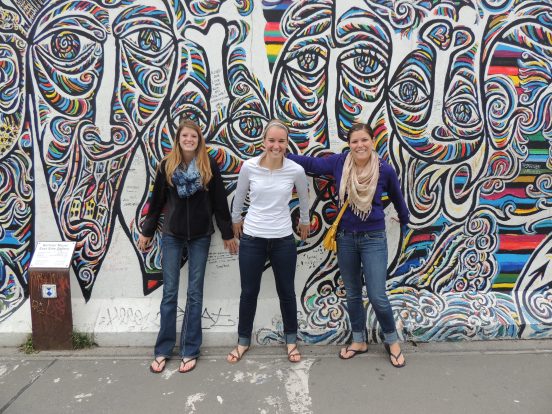
Danielle, Sarah and I being illegal and touching the East Side of the wall – good thing the border guards were gone!
The second stop on our tour was at Ackerstraße, where the wall cut through the city of Berlin. Ackerstraße and its surrounding area in East Berlin made up the “death strip”, grounds where it was legal to shoot at any East German citizen trying to flee to the western part of Berlin. Tall metal poles and bricks mark the line along Ackerstraße where the Berlin Wall stood for 28 years. East German forces went as far as dynamiting a church along Ackerstraße in 1985 because they felt it was too close to the border. The metal cross from the church peak serves as remembrance in the small park along the street.

This iron cross is from the church peak of the church which East German forces destroyed near Ackerstraße.
We had free time for lunch and opted to hang out in the sunshine along the riverbank in the heart of the city. We grabbed a quick ice cream snack before heading back to our bus for the next stop – the Jewish museum.
The Jewish Museum in Berlin opened permanently in 2001 after the closure of the East German National Gallery of Art. The reunification of Germany marked the combination of the two National Galleries (East and West) and created the current German National Gallery. Architect Daniel Libeskind designed the extension of the museum, which is a zig-zag metal-looking building. The entire museum has an impressive amount of symbolism!
Visitors enter the museum through the “old building”, the former East German national gallery, underground to the “new building”. Visitors are first presented with the ugliest time frame for Jews in Germany, between 1933-1945. The underground floor has three axises, the “Axis of Exile”, the “Axis of the Holocaust” and the “Axis of Continuity”. The Axis of Exile represents the desperate attempt many German Jews made to escape government persecution during the early 20th century. Names of the world’s biggest cities such as New York, Los Angeles, Shanghai, Brussels, Amsterdam, Buenos Aires, etc. line the walls of the hallway. As our tour guide told us, “These people didn’t care where they were headed. All that mattered is they had a valid visa and a chance at a new life.” The Axis of Exile leads to the Garden of Exile, a small outdoor area lined with 49 stone blocks which extend high overhead. The garden is on an incline, symbolizing instability and disorientation, both of which were feelings experienced by the Jewish people driven out of Germany. While the garden represents negative feelings of confusion and being lost, it also represents a new chance. German Jews found themselves in foreign lands with new customs, cultures and languages. I’m sure they felt disoriented and lost, but at least they were out of Germany had a chance at a better life.
The Axis of the Holocaust offers a much different vibe to visitors. The walls in this hallway possess much different names: those of the Nazi concentration camps, fate for so many of Europe’s Jews. Display cases along one side of the corridor house letter fragment and photos from concentration camps. Although the hallway appears not to have an exit, a door blends into the wall at one end and behind the door is the “Holocaust Tower”, a very tall, dark room with one small opening of light at the top. The Holocaust Tower represents the darkness and feelings of being trapped that many concentration camp prisoners experienced during the Nazi reign. The small sliver of light signifies the out-of-reach hope some were fortunate enough to have and hold onto during their time in the camps.
The rest of our tour of the permanent exhibit was kind of rushed due to time constraints but we were fortunate enough to see some of the museum’s unique pieces. My favorite part of the permanent exhibit is an art piece called “Fallen Leaves”. The “leaves” are metal cutouts of faces, which guests can walk on if they choose to. The “leaves” lead to a dark corner, which symbolises the lost information and memories of those killed during the Holocaust.

Walking on the “leaves” was very cool but incredibly eery, something I definitely didn’t expect when I took my first step.
After our tour at the Jewish Museum we had a group cookout at our hostel and enjoyed our time together before calling it a night.
Day 3
Our second full day in Berlin kick-started with a visit to the fairly new Memorial to the Murdered Jews of Europe in the political district of Berlin. The memorial consists of a completely random number of large concrete blocks. There are many theories for interpretation of the memorial’s symbolism, but the memorial organization and architect, Peter Eisenman, haven’t published an official meaning for the memorial, as they prefer to leave it open to individual interpretation.
A small museum is underneath the enormous concrete blocks. An extensive timeline outlines the tragedies and atrocities committed by the Nazis against Europe’s Jewish population between the early 1930s and 1945. The “Room of Dimensions”, which had the most impact on me, is the second room in the museum. This room exhibits diary entries, letters and goodbye notes written by Holocaust victims. Illuminated floor tiles fill the room, each highlighting text excerpts from all over Europe. One tile translated a post card found near train tracks in Poland, possibly from a passing cattle car carrying Jewish people to concentration camps. A little girl wrote the postcard and asked for “someone to remember us”. All of the messages on the tiles were incredibly sad and unsettling but the worst was a little girl’s message to her father saying goodbye before her death (in the picture below). She said, “Dear father! I am saying goodbye to you before I die. We would so love to live but they won’t let us and we will die. I am so scared of death because the small children are thrown alive into the pit. Goodbye forever. I kiss you tenderly. Yours, J.”
During free time after our tour of the memorial we made a pit stop at Berlin’s iconic landmark, the Brandenburg Gate. There were so many tourists but we managed to get a couple of pictures in front of the gate. You definitely can’t go to Berlin without seeing the Brandenburg Gate!
We managed to swing by the site of Adolf Hitler’s underground bunker, which is now a parking lot before getting back on our coach bus. Ironically, Hitler’s bunker site is just a block away from the Memorial to the Murdered Jews of Europe. A small sign outlining the network of bunkers under Berlin’s political district is the only indication of the actual bunker, where Adolf Hitler and his wife Eva (Brown) committed suicide on April 30th, 1945.
In the afternoon we toured the Stasi museum on Berlin’s east side. The Stasi, short for “Staatssicherheit”, which means “state police” in English, was an East German governmental body in charge of conducting undercover work to find governmental opposers during the communist rule. The Stasi museum is in the main building, “House 1”, and highlights the ins and outs of governmental propaganda and undercover tactics used by the Stasi officers.

The minister of State Security, Erich Mielke, directed the (secret) state police from this very desk!
We had free time for dinner in a small restaurant district of East Berlin. We opted for a quick Berlin classic, a currywurst, and a beer to celebrate Cam’s last night with us. He was leaving Berlin the next day to head back to Bonn and would be leaving for the USA before we returned to Bonn on Saturday.
Day 4
On the fourth day of our trip we took the bus for a little over an hour to Potsdam, a city just outside the Berlin state border. We spent most of the day visiting the beautiful Schloss Sanssouci, Frederick the Great’s summer palace. “Sans souci” means “without concerns” or “without worries” in France and was exactly what Frederick the Great had in mind when he built Schloss Sanssouci. We weren’t allowed to take pictures inside the elaborate castle, which initially made me a little angry, but all was okay when we made it outside to the gardens, where photography was fully permitted. The gardens were absolutely breathtaking and we had perfect weather, which made it even better!

Sarah, Danielle, Rachel and me in front of Schloss Sanssouci – it was absolutely impossible to keep our eyes open in the blazing sun!
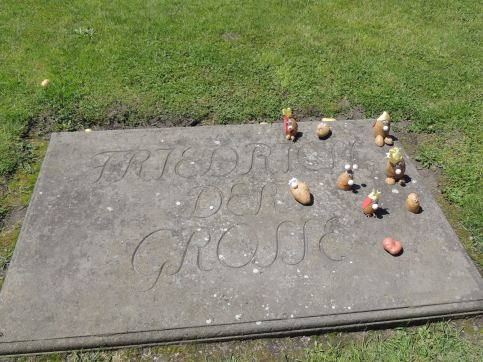
The grave marking Frederick the Great’s resting place at Schloss Sanssouci, his beloved summer castle, is right next to the graves for his 18 dogs. I have absolutely no explanation for the little potato people but I thought they were adorable!
After our time at Schloss Sanssouci we had free time in the city of Potsdam. It was the perfect day for an ice cream cone so we enjoyed those while doing a bit of shopping. We spent the last couple hours of our day in Potsdam lounging in a garden with some of our other group members. The weather was so perfect and everyone was getting worn out from our week of tours, so the park was absolutely perfect!
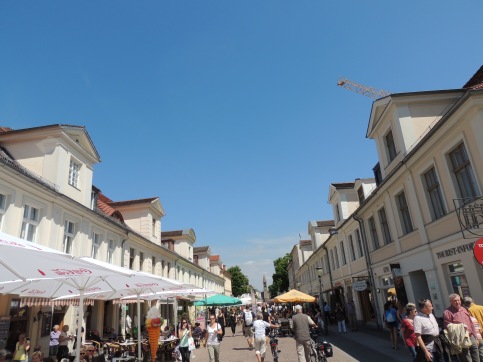
Here’s a glimpse of “downtown” Potsdam, a really cute pedestrian street lined with little shops and cafes.
Our bus driver surprised us with a very short stop at the German Parliament building on the way home. The German title for the parliament building is “Reichstagsgebäude”. The building, built originally in the 1870’s, has an incredibly rich history. A fire destroyed the building in February of 1933 under “unknown” circumstances. Theoretically, the fire was probably caused by the Nazis, as they were trying to turn the governmental power over to their headquarters. After WWII the building looked like a pile of bricks and stones. We saw a picture on a postcard in Berlin of the Reichstag after the last air raid in 1945 and it didn’t even look like a building to me! The Reichstag building was technically in West Berlin after the war but Soviet forces closed entrances in the back of the building in 1961 because the building came so close to the border with East Berlin. After the German reunification in 1990, a long and trying reconstruction process started and wasn’t completed until 1999. The building is beautiful but what the building means for the German people is even better!
Day 5
On our last morning in Berlin the group made the trek in our double-decker coach bus to Berlin’s “Museumsinsel”, which means “museum island” in English. The Germans don’t kid about their extensive museum displays! We had the choice of three museums, the old national gallery of art (die alte Nationalgalerie), an archeology museum (das Neues Museum) and another museum with art, coin and metal collections (das Bode Museum). We opted for the archeology museum, which was featuring an exhibit all about the Egyptians. The weather was beautiful outside so we only spent about an hour in the museum, but it was pretty cool to see real Egyptian artifacts. My favorite part was looking at their farming tools because all the tools resembled things similar to what we use today. Those Egyptians had things figured out way before our time!
Before leaving the Museuminsel, I had to make a stop at the Pergamon Museum. When my friend Lindsay and I went to Germany with my mom and aunt for my cousin’s wedding, we went to the Pergamon museum while we were in Berlin for a few days. We were in Berlin during the summer of 2003 so Lindsay was 12 at the time and I was 11 years old. I’m not sure if my mom and aunt didn’t realize the amount of nakedness that comes with European art and sculptures, but Lindsay and I were beyond appalled and still talk about our scarring experiences at the Pergamon museum.
We spent the rest of our day and our final hours in Berlin walking around, enjoying the sunshine and exploring the best of Berlin. We made our way to the beautiful Berliner Dom and enjoyed our lunch in the grass of a nearby park.
Since it was so warm outside, we took a little extra time to play in the nearby fountain. I forgot how much fun little things like that are!
After lunch, we went to the american checkpoint in West Berlin, Checkpoint Charlie, did a little bit of souvenir shopping and even grabbed a much-needed iced frappé before heading back to the hostel for dinner and packing.
A sign of two soldiers, one an American solider and one a Soviet solider, stands in the middle of the street just before the American checkpoint, Checkpoint Charlie. When looking at the American soldier (left), one is in the former East Berlin, the Soviet-occupied area of the city. The Russian solider (right) is seen from the former American-occupied West Berlin.

The entirety of Checkpoint Charlie is rather small but its historical significance is huge! Checkpoint Charlie is the only place in the world where American and Soviet tanks ever stood pointed and ready to fire at each other during the entire Cold War.
Our five-day tour through German’s biggest city was absolutely fantastic! Our program did a fantastic job of finding things “off the beaten path” for us to do but we made sure to fit the “touristy” things in, too. It was so much fun to travel with our group and we are beginning to realize that good-byes to our group members from far and near in July will be very difficult. Berlin is a beautiful place with such a rich history! It is definitely worth a visit!



